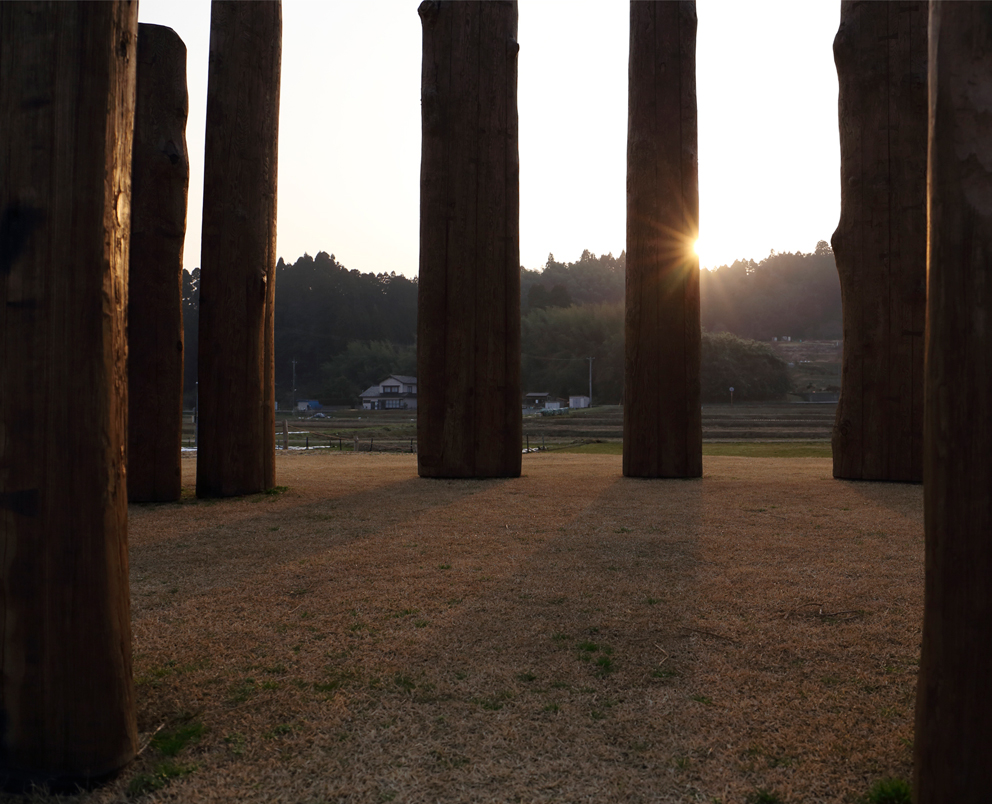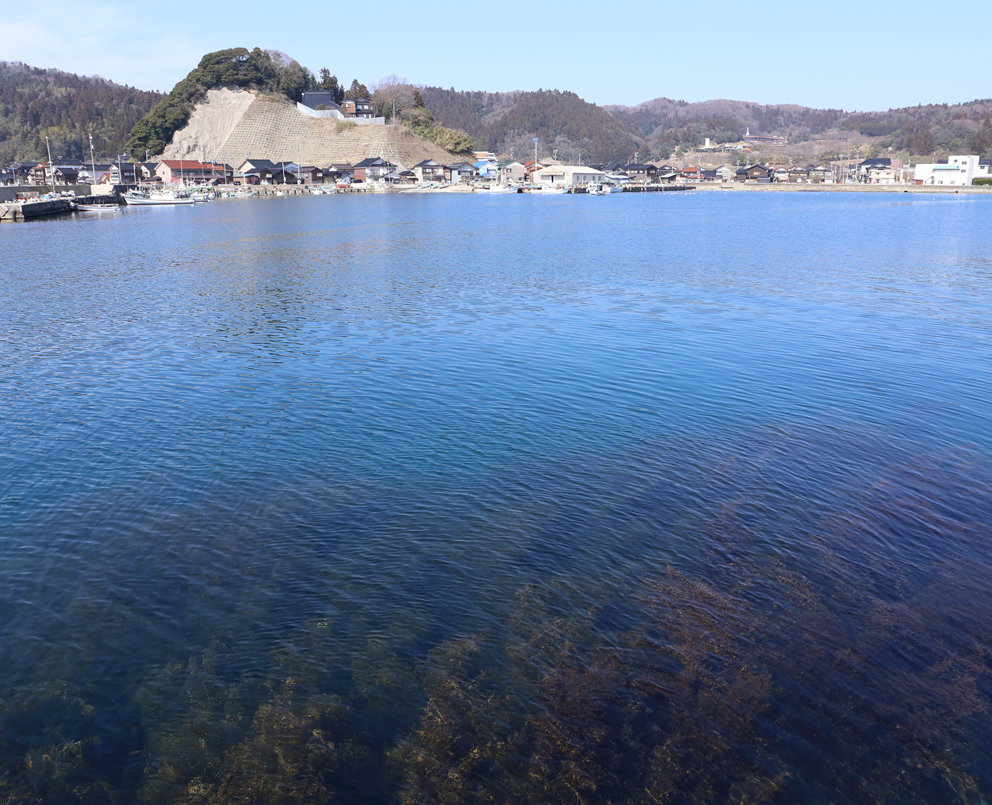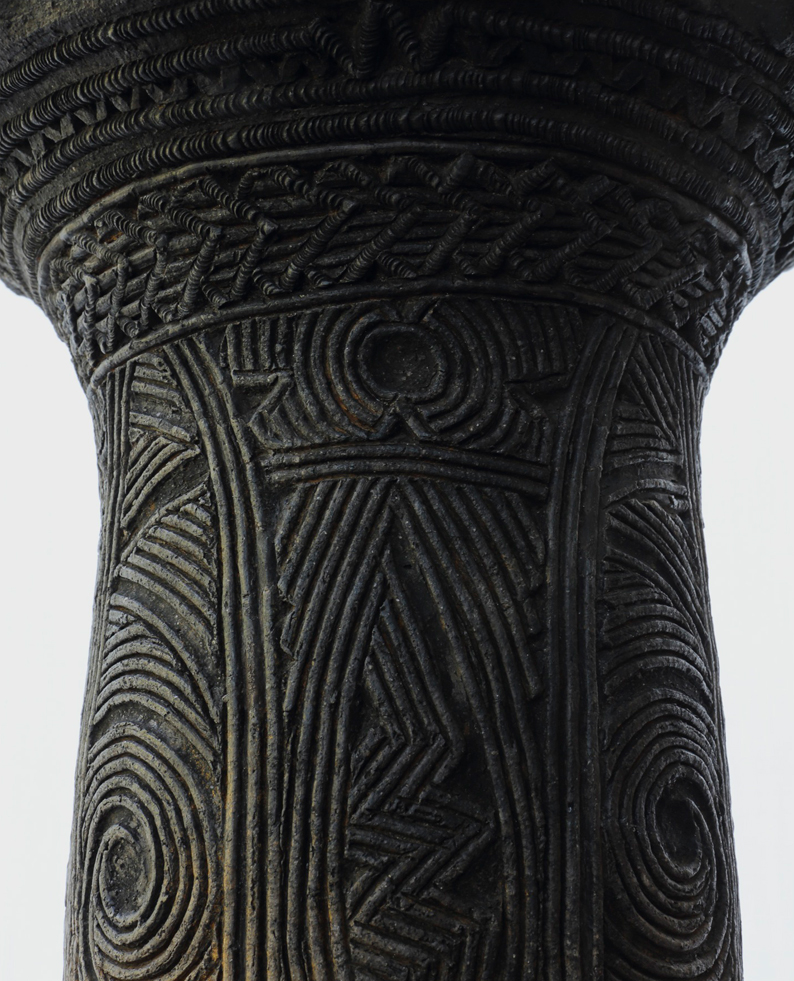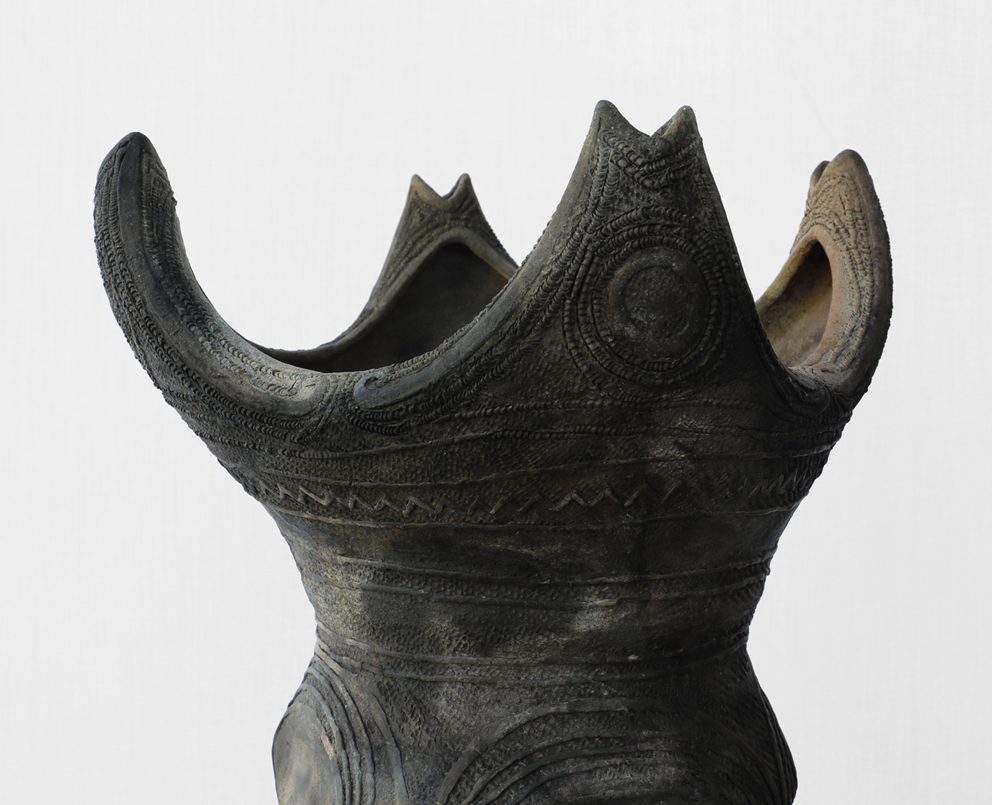From an Underwater Forest Back to Earth
The late winter had passed, and the March sky was as still as the buds awaiting spring. I landed in the Noto Peninsula, in Ishikawa Prefecture, and took a leisurely drive toward the city of Suzu while gazing at the fields still dressed in snow. My destination was the Mawaki neighborhood of Noto Town, overlooking Toyama Bay from the eastern coast of the peninsula projecting into the Sea of Japan. From my vantage point on the plateau, I enjoyed a clear view from the surrounding hills down the gentle slope straight to an inlet. Slightly behind me was the apex of an alluvial fan where river work carried out in the early 1980s uncovered numerous pieces of Jomon pottery and stoneware. The Mawaki Site has since been designated as Prifectual Historic Site of Japan. It offers tours of a formerly thriving permanent settlement lived by the Jomon people for some 4,000 years. That is, people have lived in settlements since time immemorial.

I first learned about the Mawaki Site from the philosopher Takeshi Umehara, whom I met last year for a magazine interview themed around Jomon culture. Ever since then, I had dreamed of one day standing by the wooden pillars forming a timber circle. My rule of thumb in conducting fieldwork has always been to visit and “feel” the site in person, so it made sense to head straight to the timber circle. The 12 wooden pillars poking out of the ground were restored from the bases of the original pillars that were found remaining buried in the ground, meaning I got to stand in the circle formed by life-size structures designed by the Jomon people.
I walked around the circle several times and then stood between two thicker pillars that may or may not have served as the entrance. This spot looked up to the hills straight ahead and down on the sea directly behind. Instantly, I realized that the pillars were placed in just the right positions for forming a beeline between the mountain and the sea. The pillars were made of chestnut trees cut lengthwise into half-moon shapes and curiously positioned in a circle with the cut surface facing outward. One wonders why. Mysteries like this will always remain a mystery, and yet nothing would be more lamentable than for these mysteries to vanish from existence. I find that when I am drawn to a site, I visit it in an endeavor to transform memory into physical experience.

Hideki Takada, the director of the Mawaki Archaeology Museum who served as my guide, pointed at the river where as many as 286 sets of dolphin skeletons were discovered. Later, I found that the museum displayed artifacts along with photographs of fishermen from Mawaki and the surrounding area practicing dolphin drive fishing. Surprisingly, that method of hunting continued up to around 1960, meaning it was preserved and practiced for thousands of years until just recently.
For a change of view, we went to the ocean and looked up at the timber circle on the hills. The aquatic plants swaying below the clear water surface suggested there was a forest of sorts in the sea, too. The Jomon people may have captured animals and gathered nuts and berries in the forest both down in the water and up in the mountain, and then performed a ritual expression of respect for the life taken at the point halfway between.

That same spirit dwelt in the pottery. Back at the museum, a piece of Mawaki-style pottery (collection of the Mawaki Archaeology Museum) was specially removed from the showcase for me to study up close. Without the sheet of glass separating us, the pot seemed to be imbued with life. The mouth was particularly striking—it depicted a fish that looked so fresh that it might jump out—crystalizing the cycle of life into the sculpture. The Jomon people of Mawaki not only created a perfect circle on the earth through their timber circle but also expressed the circle of life in their pottery.
<PAPERSKY no.41(2013)>

Jomon Fieldwork | Nao Tsuda × Lucas B.B. Interview
A conversation between ‘Jomon Fieldwork’ Photographer and writer Nao Tsuda and Papersky’s Editor-in-chief Lucas B.B. The two discuss the ways Jomon culture continues to play an important role in modern day Japan. The video was filmed at Papersky’s office in Shibuya in conjunction with Tsuda’s exhibition “Eyes of the Lake and Mother Mountain Plate” held at the Yatsugatake Museum in Nagano.
Nao Tsuda | Photographer
Through his world travels he has been pointing his lens both into the ancient past and towards the future to translate the story of people and their natural world.
tsudanao.com











